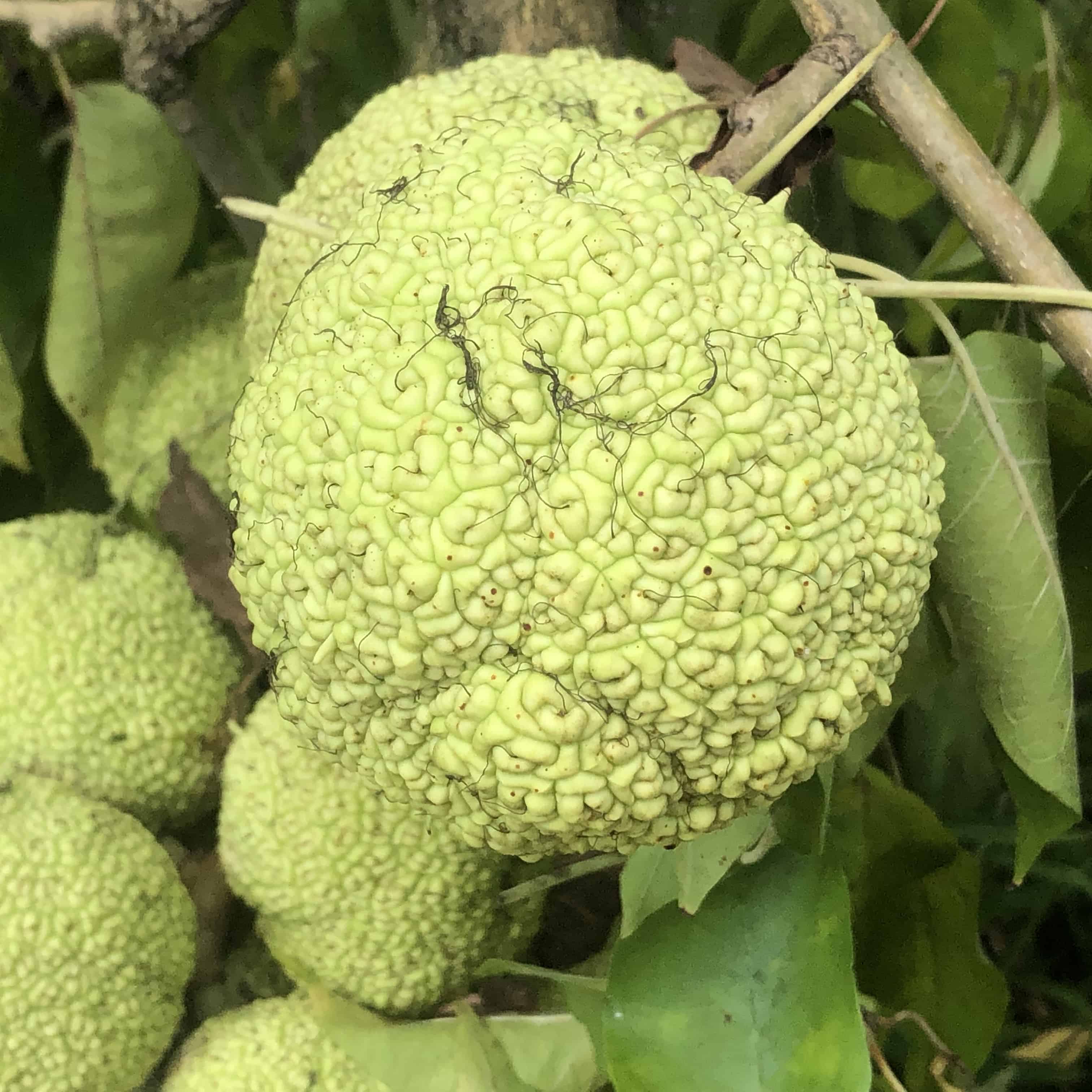Osage Orange is a tree that you probably never noticed! Urban areas don’t provide ideal growing conditions, and they are not easy to find. Maclura pomifera is locally dominant in areas where there is exposed mineral soils or overgrazed pastures. In these areas, it can be an invasive species and displace a variety of native plants and trees. It’s habitat is most of the lower 48 except a few northwestern states.
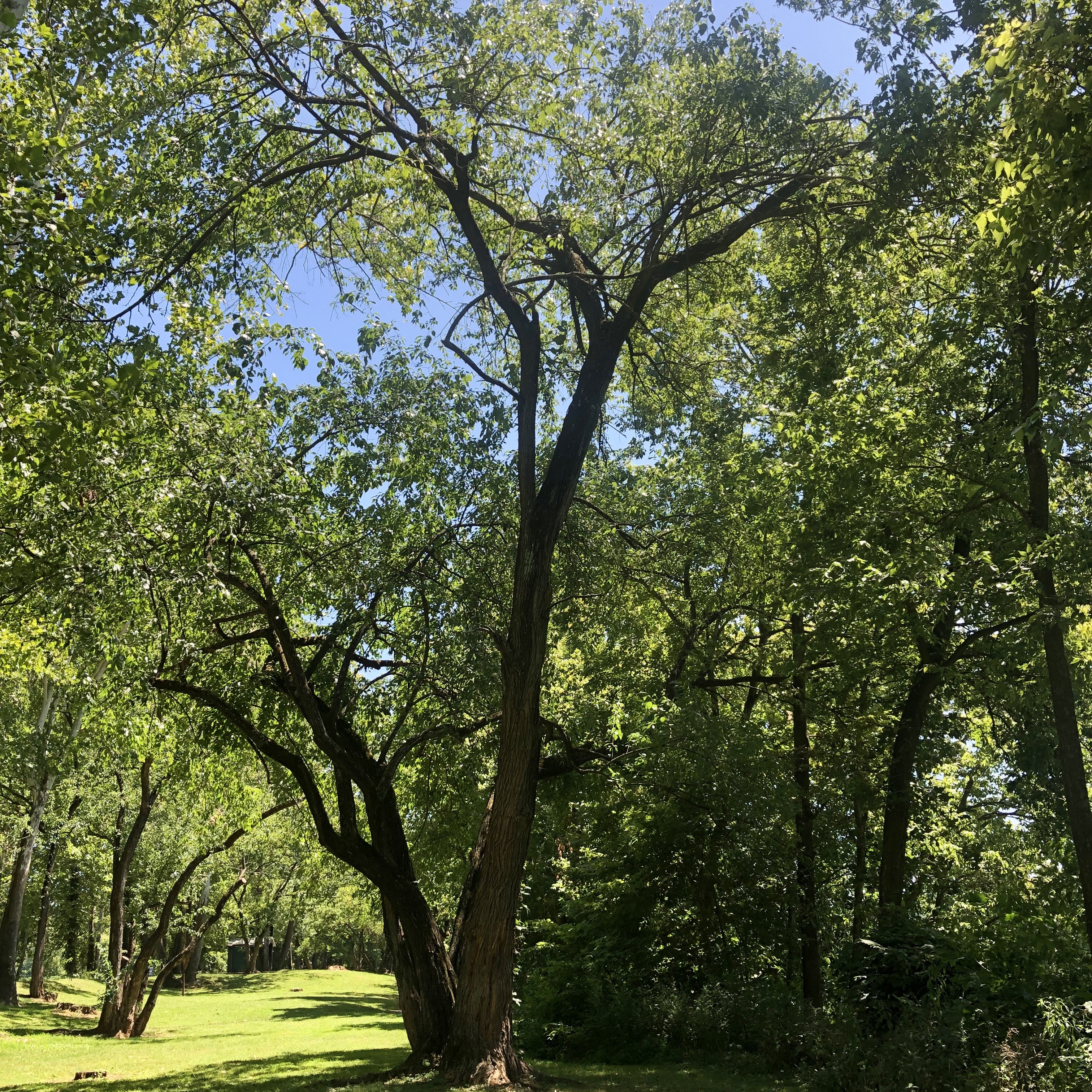
Growth Patterns
Maclura pomifera wood is strong and flexible. Years ago, one of its uses was wagon wheel rims.
Trees grow in a lovely slightly weeping pattern with long arching limbs. The branches are thorny.
Osage orange is in the Moraceae family which is the same family as mulberry trees. They have similar growth patterns.
Its canopy is dominant and can spread 20-40 feet. In comparison to the canopy,
the trunk is shorter and varies in size depending on the tree’s age.
This is a mature one that we found along the C & O Canal trail.
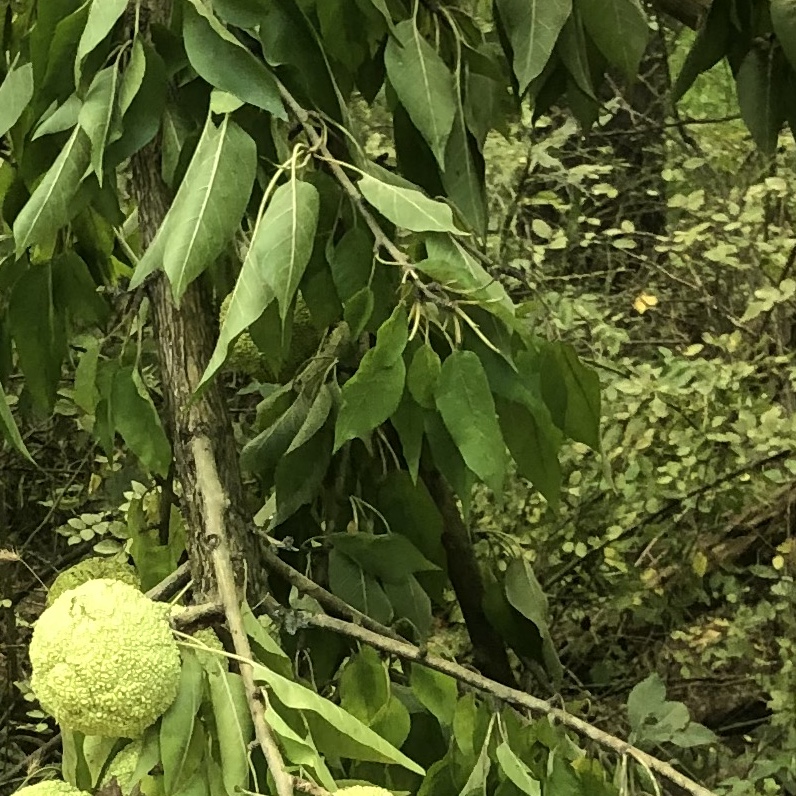
Leaves
The leaves are 2-5 inches in length. They are medium to dark green, smooth and waxy on top. The underside is a lighter green and a little bit fuzzy. They can be several shapes, but most are ovate- lanceolate which means oval with a point at the end.
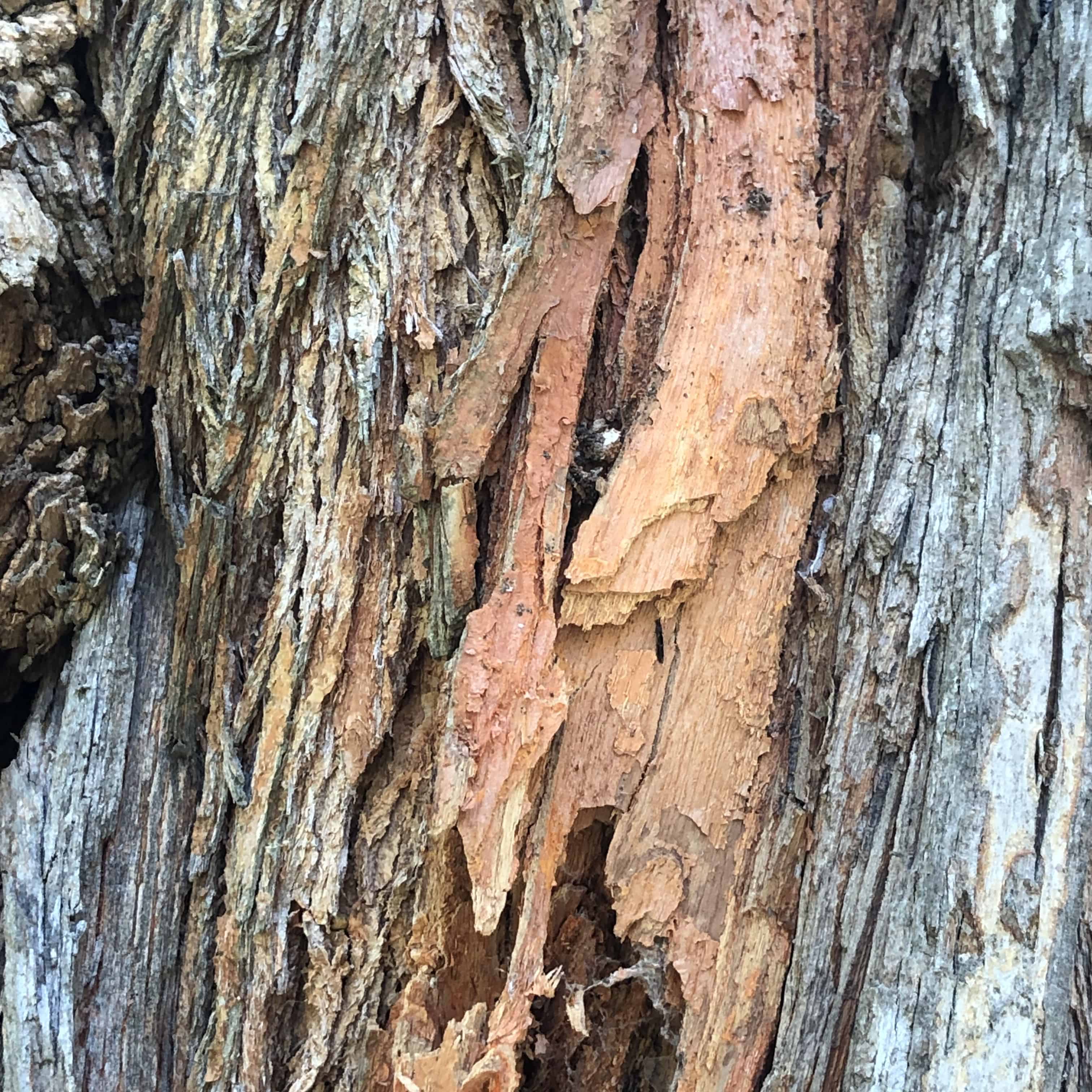
General Characteristics
The trees are small to medium size ranging from 35-65 feet tall. They have rough deeply furrowed bark. The wood underneath is a characteristic orange color. The branches are thorny.
The Fruit
If you have ever seen one, you probably noticed the unique green fruit that it produces on female trees in the fall. I use the word fruit lightly because it is not edible. It is just a vehicle to disperse the seeds. The fruit is sometimes referred to as a “hedge ball”. The fruits emerge in September. They can grow in singletons or clusters. Technically, the ball is a multiple fruit or globose consisting of many single seeded druplets. The flower is inconspicuous, which is probably why I’ve never seen one!
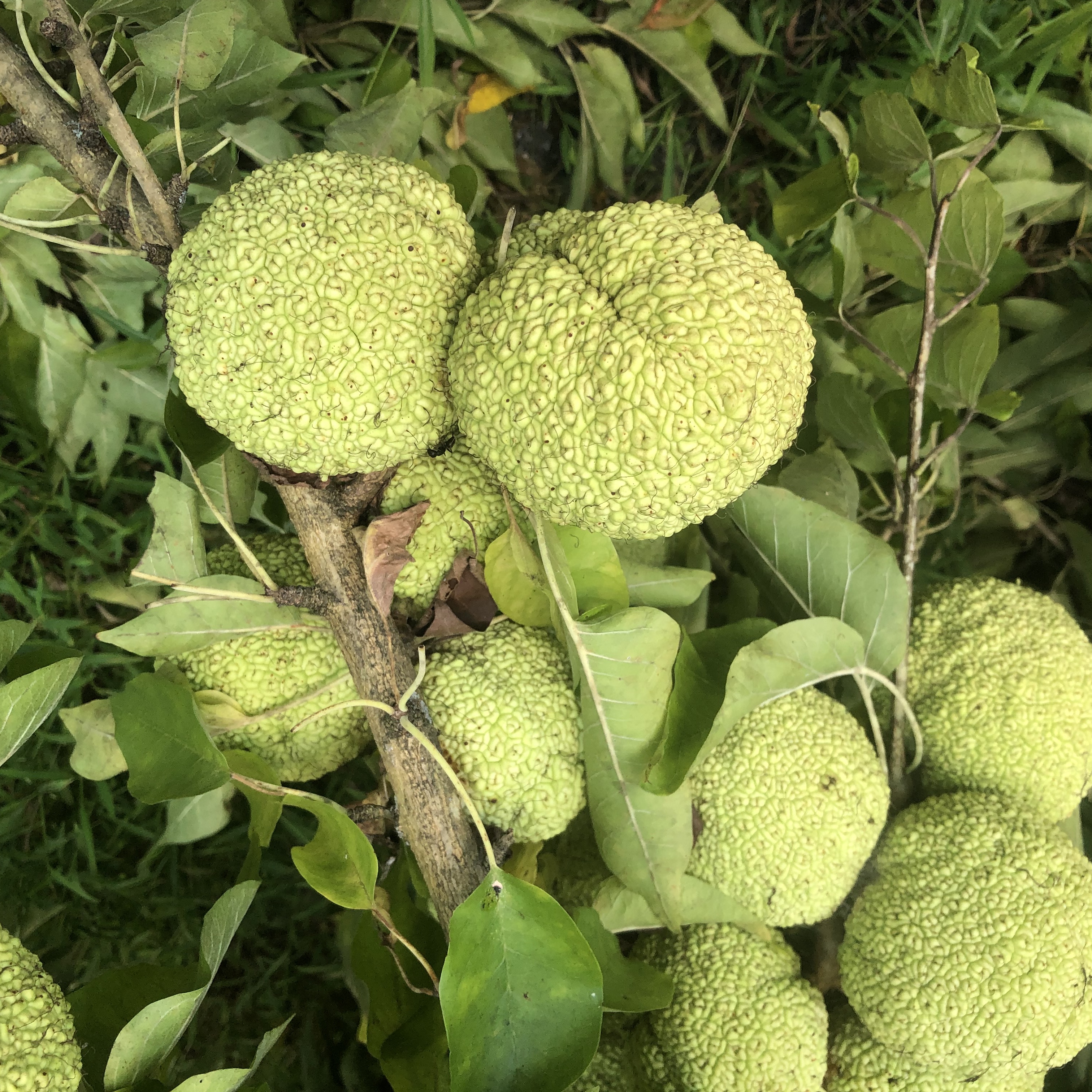
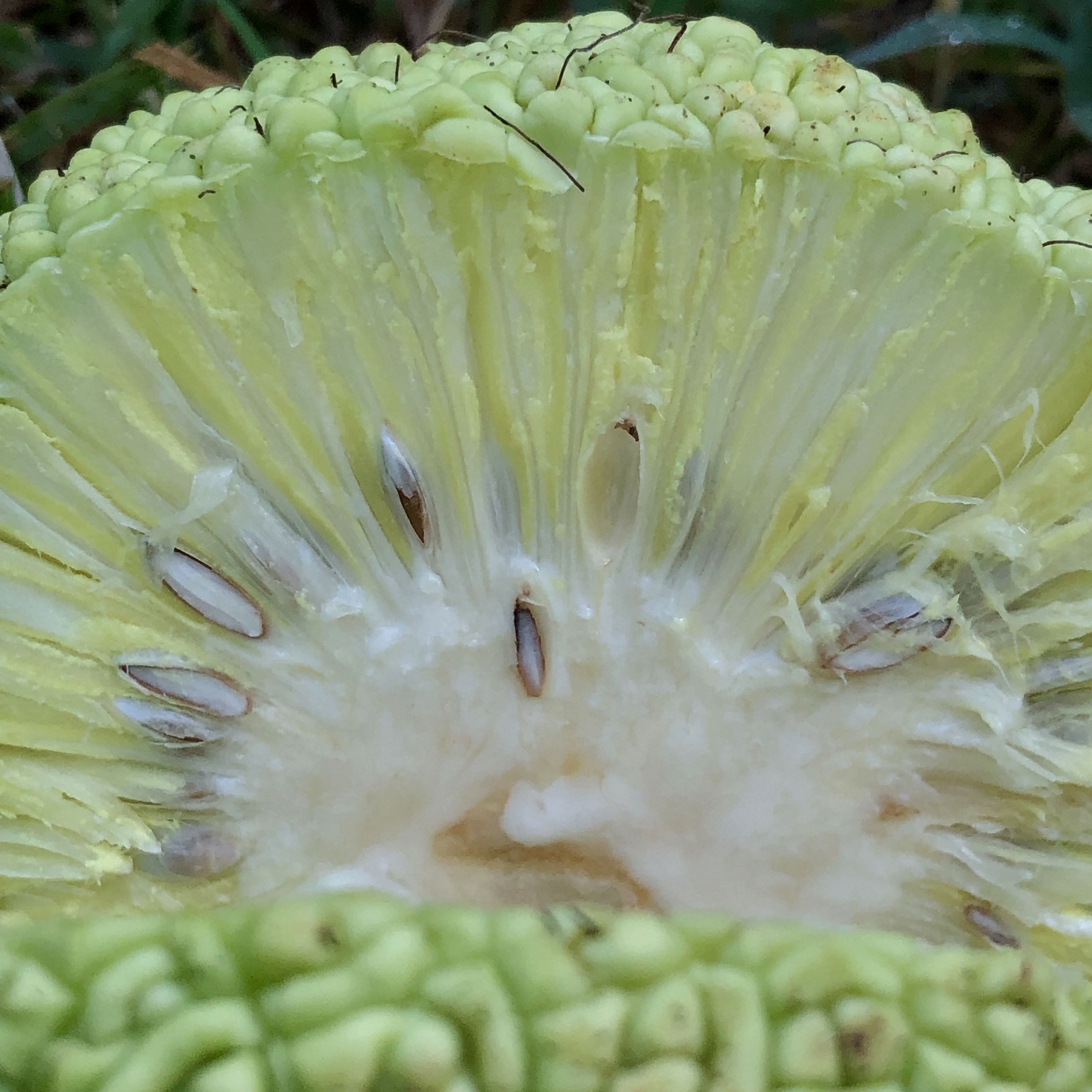
Interesting Facts
You never know what history is associated with some of the simple things that are an intricate part of the diversity in the forest. Long ago Osage Indians used the wood to make bows. In the mid 1800’s the wood was used for fencing and hedges because of its strength and resistance to decay. We all know the importance of antioxidants. The isoflavone pomiferin is a component of the fruit.
References:
Forest Service Department of Agriculture
United States Department of Agriculture, Natural Resources Conservation Service
